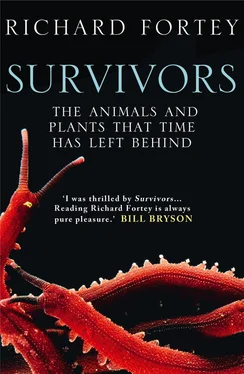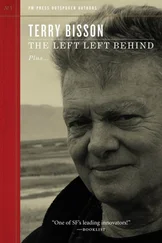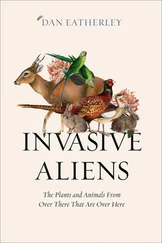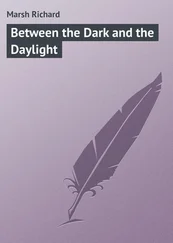The story of the lobopods now disappears. There are no velvet worms or indeed any kind of lobopods in strata of Ediacaran age. There has been no shortage of attempts to find them. Geologists and palaeontologists have been cracking open likely rocks for decades now. The fact is that there are no trilobites, no early horseshoe crabs, nor any old familiar biological friends to be found in Ediacaran age strata. As in The Hunting of the Snark by Lewis Carroll searchers vowed: ‘To seek it with thimbles, to seek it with care; To pursue it with forks and hope’, but to no avail. Even big hammers did not work. Instead a whole series of fossil animals have been recovered which have proved as enigmatic as they are exciting: not snarks but boojums. They are not small – some of them are bigger than a dinner plate – and neither are they uncommon if the searcher goes to the right place. The Ediacaran Period takes its name from the Ediacara Hills in the Flinders Ranges in South Australia where a diverse selection of these remarkable early fossils was first collected. They appear as impressions on fine sandstones, many looking like strange leaves or fronds. Most of them show evidence of divisions or compartments dividing up the body, but they are not simple segments, because they are usually offset from one side of the animal to the other. Similar fossils are now known from more than thirty localities all over the world: from Arctic Russia, Canada, America, Newfoundland, and Great Britain. Everyone agrees that these fossils lacked skeletons, but otherwise the experts disagree on almost everything else. Most of them would now concur that the Ediacaran animals were not obvious ancestors of the animals we know from the Cambrian onwards; they were genuinely inhabitants of a former world that did not survive. It seems only fitting that in a book about survivors I should also go to visit a world that failed to endure. The journey took me back to Newfoundland, where I had spent a year at Memorial University in St John’s when I was a young scientist. So I was travelling into my own past as well as towards a far, far deeper time.
Newfoundland is an island at the tip of eastern Canada and is itself something of a survivor. Built on the fortunes made from codfish on the Grand Banks, it has survived the great crash in the population of its most important crop. It is the textbook case for the effects of over-fishing. In the thirty years I have known the ‘rock’ (as the natives call it) I have watched with bewilderment as fishermen have laid up their boats, and an apparently endless resource has all but disappeared. The codfish has not become extinct, of course, but the decline of this otherwise unfussy fish does prove that nothing in nature can be assumed to be unassailably fecund. High-tech factory ships from outside the island indiscriminately scooping up huge quantities of fish are mostly to blame. The Newfoundlanders, ever resourceful, have now taken to oil. The name of the Come-by-Chance refinery is somehow appropriate to their persistence in the face of setbacks not of their making. The little fishing villages along the coast are known as ‘outports’, and ever since they have been required to eschew the cod, those young outport men who have not gone to Come-by-Chance have left to find work at Churchill Falls, the huge hydroelectric plant in northern Labrador, or even to become hands on the extraction of the Athabasca ‘tar sands’ on the other side of Canada. They are a breezy bunch, despite their peripatetic life, and have an unusual accent: Irish with added stretched vowels, and wheezy interpolations of interjections like ‘Jeez, my son’. The outports are all freshly painted these days, with wooden houses in cheery colours scattered up the hillsides. For the few who stay behind, there is nothing much to do except repaint the picket fences.
The drive south along the Avalon Peninsula from the capital St John’s passes several sheltered coves tucked away inside a coastline of magnificent cliffs. The geology is laid bare all along the rim of this island: the only problem is reaching it. Inland, the opposite is true; an endless forest of short conifers interspersed with scattered birch and aspen trees is interrupted only by shallow lakes called ‘ponds’ hereabouts, which are a legacy of the last ice age; the bedrock is hard to see among the scrub. As we approach the end of the Peninsula the trees get shorter and shorter, planed off by the fierce winds. Finally they crouch against the ground, as if terrified to poke up a twig. Usually the whole of this exposed area is swathed in fog, so the landscape supplies a passable setting for a vampire movie starring Vincent Price. But the day we visit it the weather is clear and sunny, with a few fluffy white clouds in a faultlessly blue sky. My companions are astonished, it was the best day they had seen in the last decade. The warden of the Reserve came from Wales, and remarked ruefully that he had chosen to work in the only place in the world with worse weather than Ffestiniog. One of the Newfoundlanders mumbles to me under his breath that the warden will be betrothed before Christmas. ‘Not a lot of single men around here’, he says, with a wink.
At Mistaken Point, a path leads for a mile across a bleak coastal heath, which is less forbidding examined closely. Berry-bearing plants hidden in the close sward bear blue-black or scarlet fruits, and bright yellow tormentil flowers smile at us along the way. Patches of Sphagnum bog support pitcher plants whose leaves trap flies and mosquitoes to compensate for the poor nutrition offered by the damp wilderness. Even wild roses are tucked into natural hollows. As we approach the sea, grasses take over to make a natural lawn. Fulmars wheel in and out, just to have a look. The path leads onto the cliffs, which are quite comfortable to clamber over in this part of the Avalon Peninsula. The sedimentary rocks of which they are composed form a series of ledges that dip at a gentle angle into the sea, forming steps that we can climb up or down to explore different strata. The rocks are dark in colour, and the more resistant beds have made natural groynes that project out into the ocean. Waves break continuously over the ledges, throwing up foam – and this on a calm day. When winter storms are raging, salt spray must blast all the exposed surfaces. It is not hard to imagine how Mistaken Point got its name. The bones of fifty ships lie offshore, waiting to be fossilised.
Each of the flat surfaces exposed on the ledges is an ancient sea floor. In 1967, a graduate student geologist called S. B. Misra at Memorial University of Newfoundland discovered the most extraordinary organic remains preserved on these stretches of petrified sediment surfaces. Only a year later an account of the finds had been published in the most prestigious scientific journal Nature, jointly with Mike Anderson, also of Memorial University. The rocks were recognised as being late Precambrian in age (this was long before the Ediacaran had been named). There was palpable excitement in the scientific community at finding such large fossils in rocks of this great antiquity, although it was not known at the time just how old they were. Misra subsequently described the original conditions under which the sediments had been deposited. There were some special features about this discovery. First, the fossils could not be safely collected. They were impressions on the exposed surfaces of a very hard but brittle rock, shot through with cracks, and often located in the middle of a great uncompromising slab. The best way to study the remains was to pour a latex solution onto the surface of the rock, allow it to dry – even that might be a challenge with the Atlantic hard by and fog always lurking in damp banks – and then take the hardened cast off to somewhere nice and warm. For scientific description it is usual to have an actual specimen on which to found a scientific name, and this should be kept in perpetuity in a public museum. This was obviously going to pose a problem, unless a public museum was constructed over the cliffs. Second, with such unusual material it is rather hard to know where to begin, since most of the usual biological pointers are absent. How does one describe an enigma, except as ‘enigmatic’? Perhaps it was a combination of these factors that stalled a full account of these remarkable fossils. Anderson took over the material when Misra went back to India, and when I met him in the late 1970s he seemed to be crippled into inaction by these admittedly difficult problems. At the same time, he put his marker down upon the fossils so that nobody else could study them. The result was that most of the Mistaken Point fossils did not receive proper descriptions and the respectability of scientific names for several decades. Guy Narbonne and his colleagues from Queen’s University, Ontario, are making good this omission even now. It is a strange fact about science that until an object or a phenomenon receives a name in some way it does not exist. Names really matter. They retrieve something from an endless chaos of anonymity into a world of lists, inventories, and classification. The next stage is to understand their meaning.
Читать дальше












